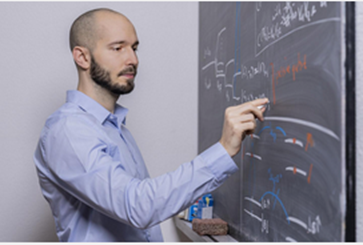
Blueprint for Quantum Computer Stability
Paul Scherrer Institute (PSI) researchers have proposed a detailed plan of how faster and better-defined quantum bits—qubits—can be created.
The researchers demonstrated how the qubits can be activated, entangled, used as memory bits, and read out, publishing the design concept and supporting calculations in the journal PRX Quantum.
The authors describe how logical bits and basic computer operations on them can be realized in a magnetic solid, whereby qubits would reside on individual atoms from the class of rare-earth elements, built into the crystal lattice of a host material. They propose that targeted laser pulses could momentarily transfer the information to the atom’s electrons and thus activate the qubits, whereby their information becomes visible to surrounding atoms. Two such activated qubits communicate with each other and thus can be “entangled.”
The team’s method of activating and entangling the qubits has a decisive advantage over previous proposals and is at least ten times faster. The advantage is not only the speed with which a quantum computer based on this concept could calculate—importantly, it addresses the system’s susceptibility to errors.
